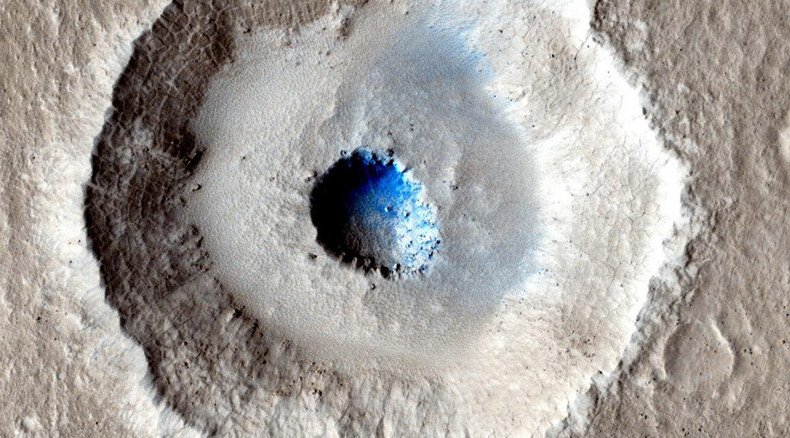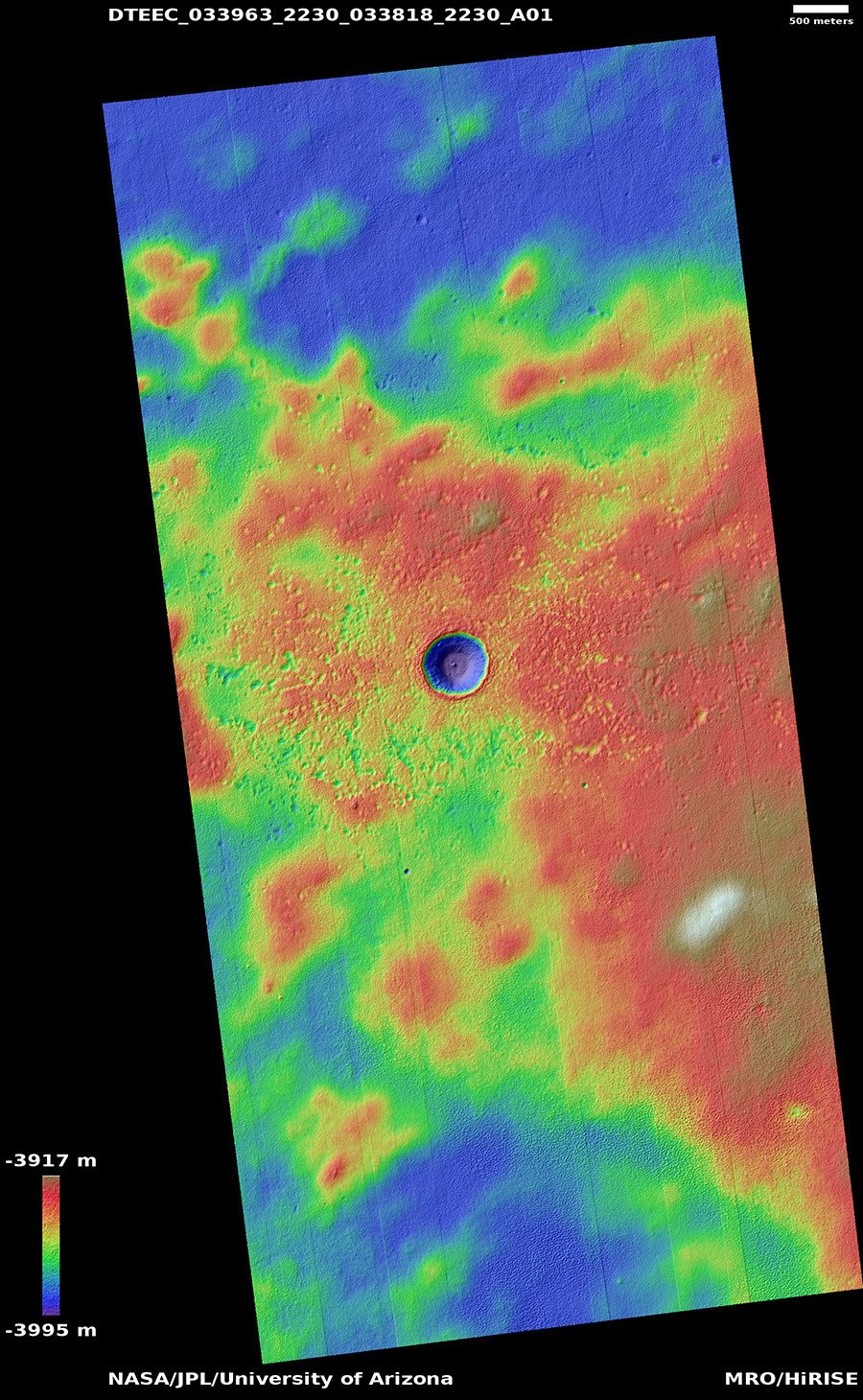Bizarre Mars crater reveals huge slab of ice closer to surface than any seen before

Scientists have finally solved the mystery of Mars Reconnaissance Orbiter’s puzzling discovery of a perfect, terraced, gigantic crater. And it’s better than ‘aliens’. For humans have just discovered water ice at much shallower depths than previously thought.
It all started with the MRO’s finding of a crater that was too bizarrely shaped. A meteor impact normally results in debris flying out in different directions. Not the case here; the crater was perfectly terraced and the size of California and Texas – two of America’s three biggest states – put together.
The predictable flurry of articles declaring it as a UFO landing emerged soon thereafter. But Ali Bramson of the University of Arizona’s Lunar and Planetary Laboratory (LPL) dispelled the sensationalism – and offered something better: “an enormous slab of water ice, measuring 130 feet thick.”
Bramson explained the initial confusion: “Craters should be bowl-shaped, but this one had terraces in the wall.
“When the crater is forming, the shock wave from an object hitting a planet’s surface propagates differently depending on what substrates are beneath the area of impact,” and, therefore, “If you have a weaker material in one layer, the shock wave can push out that material more easily, and the result is terracing at the interface between the weaker and stronger materials.”
But terraced craters the size of two US states are quite rare. And this area of Mars – the Arcadia Planitia – is pock-marked with the peculiar terrace-shaped plugholes. “The craters may have formed at different times, but they all have terraces, which indicates something weird is going on in the subsurface,” Shane Byrne, associate professor at LPL, said.
The laboratory made good use of its High Resolution Imaging Science Experiment camera (HiRISE), and combined the data with SHARAD – or the Shallow Radar, aboard the MRO to make a 3D model of the craters’ characteristics. The signals being sent to Mars hit the surface at different times, allowing for a topographical imaging to take place.

Surprisingly, this particular crater revealed lots of ice, just beneath Mars’s thin upper crust of dirt. We of course already know that water and ice had to be present on the planet at some point. But not at such depths, and at such mid-latitudes, comparable to Earth’s.
"Knowing where the ice is and how thick it is can tell you about Mars’ past climates," Byrne said. "The fact that the ice is so thick and widespread leads us to think it came into place during one of Mars’ past climates when it snowed a bunch, ice accumulated, was buried, and then preserved.”
But at such shallow depths the Arizona team would have expected the ice to melt, which it hasn’t, in all this time.
India's Mars Orbiter captures stunning photo of solar system’s largest canyon http://t.co/VGezFjtzftpic.twitter.com/FHTcpfesf8
— RT (@RT_com) August 18, 2015And that is what perks everyone’s interest and definitely paves the way for further research. Because, as Byrne puts it, “There’s no climate model that we have now that explains this.”
And, who knows, this could bring us a step closer on the way to colonizing the place. We are soon getting the tools – NASA’s just tested its new mega-engine that should provide enough juice to take us there.













